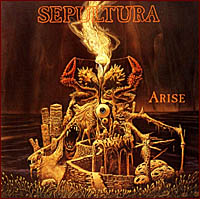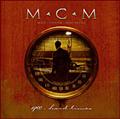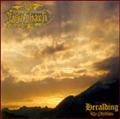SEPULTURA (br) - Arise (1991)

Label : Roadrunner Records
Sortie du Scud : 1991
Pays : Brésil
Genre : Thrash Metal
Type : Album
Playtime : 9 Titres - 42 Mins
Quatrième album studio du groupe brésilien SEPULTURA, Arise est l’apogée de leur grande période Thrash complexe. L’album suivant les embarquera vers d’autres contrées… mais nous en reparlerons une autre fois. Donc, Arise. Il reste pour moi le meilleur album du groupe. Si Beneath The Remains avait annoncé une cassure avec le passé par un son meilleur, une puissance nouvelle et un éloignement par rapport à un passé inspiré par le Death, Arise en est la réelle concrétisation. Cet album m’a fait l’effet à l’époque, toute autre comparaison mise à part, à …And Justice For All de METALLICA. On y trouve des morceaux structurellement complexes, alliant tempo de fou à des rythmiques plus posées, dans un souci du détail et de la justesse encore jamais atteint par le groupe. Et les deux groupes de changer après ces énormes monstres qu’ils nous avaient sortis…
Tout commence donc par le titre éponyme, « Arise ». Après un petit sample bien râpeux et glauque, on entame sur une rythmique assassine, simple mais bougrement efficace. Ceux qui pensaient que le groupe n’arriverait plus à jouer aussi vite pour cause d’arthrite peuvent se sentir soulager. Le groupe est en forme et Max Cavalera a toujours autant de rage à faire sortir. « Dead Embryonic Cells » est un pur bijou et une parfaite démonstration de ce qu’est ce Arise. Le morceau est à multiples tiroirs, possède pas mal de breaks bien sentis, des ralentissements, des accélérations… et un break mythique monotone qui sera un des grands moments du Under Siege: Live In Barcelona. Enorme ! Le titre suivant, « Desperate Cry » est un de mes préférés. J’en ai passé des heures à le jouer à la guitare ce morceau, quand je jouais encore. Lui aussi possède de multiples niveaux, mais est surtout plus lent et axe plus sur l’ambiance que sur la brutalité pure. Et ce choix paye puisque le morceau est un des meilleurs moments de cet album. On pourra noter aussi le titre « Altered State » qui est un peu dans la même veine que « Desperate Cry » : un riff lourd, des paroles qui laissent peu de place à l’espoir… on enfonce un peu plus le clou, mais Max dévoile sa triste vision du monde.
Une mention spéciale est à attribuer à Igor Cavalera qui, derrière ses fûts, apporte une dimension à ce disque qu’il n’aurait pas atteinte forcément avec un autre type de jeu. J’ai toujours adoré la manière de jouer d’Igor, et ce disque ne me fait pas mentir.
Malgré quelques titres en deçà des autres, Arise reste pour moi un album monstrueux et à connaître. Un grand moment de Thrash des années 90.
Ajouté : Mardi 15 Avril 2008
Chroniqueur : Wong Li
Score :     
Lien en relation: Sepultura Website
Hits: 12737
|














